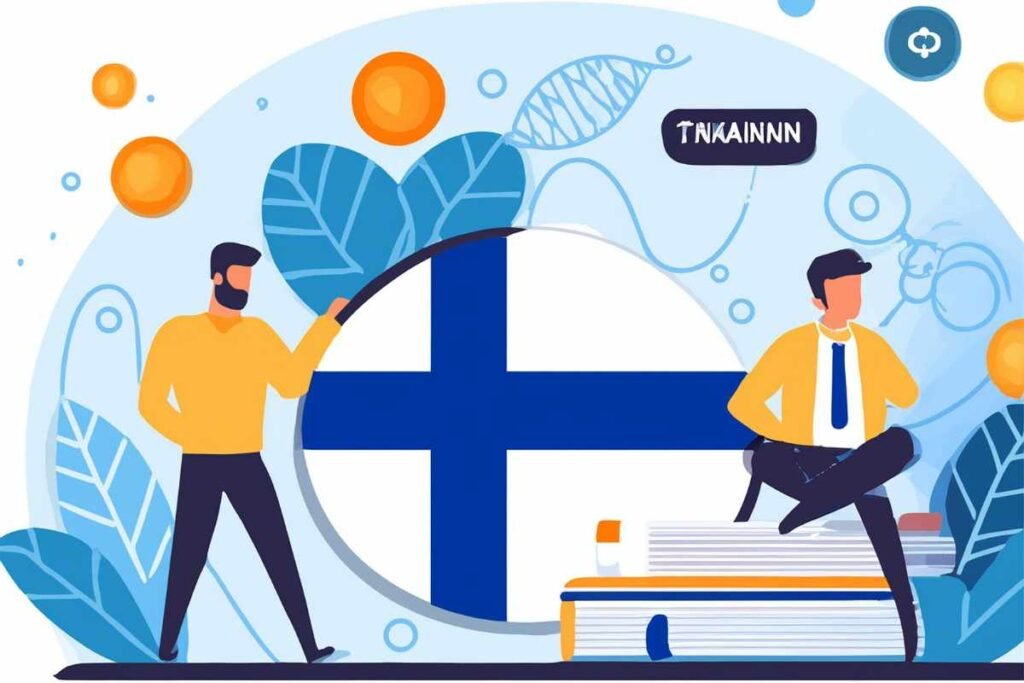Table of Contents
The term Kääntäh may not be widely recognized outside Finland, yet it embodies a concept of profound importance in Finnish culture and language.
Translating to “translator” or “interpreter” in English, Kääntäh is derived from the Finnish verb kääntää, meaning “to translate” or “to interpret.”
The suffix “-h” denotes someone who performs the action, thus Kääntäh signifies a person engaged in the art of translation and interpretation.
This article delves into the origins, significance, and evolving role of Kääntäh, shedding light on how it intersects with Finnish society and culture.
Understanding Kääntäh
At its core, Kääntäh represents more than just a professional role. It symbolizes the bridge between languages and cultures, emphasizing the importance of effective communication.
The role of a Kääntäh is pivotal in ensuring that messages, ideas, and information are accurately conveyed across different linguistic contexts.
In a multilingual world, the function of translation and interpretation is crucial for fostering understanding and collaboration.
The Linguistic Roots of Kääntäh
Kääntäh is rooted in the Finnish verb kääntää, which encompasses both translation and interpretation. The verb itself is derived from the Old Finnish word käännä, which means “to turn” or “to change direction,” metaphorically extending to “turning” or “changing” language.
The addition of the suffix “-h” transforms the verb into a noun, indicating someone who performs the action thus, a Kääntäh is one who translates or interprets.
The Finnish Language: A Cultural Pillar

The Finnish language, spoken by approximately 5 million people predominantly in Finland, is a member of the Finno-Ugric language family.
Its roots trace back to the 12th century, evolving through interactions with neighboring languages such as Swedish and Russian.
Finnish is known for its distinctive phonology, complex grammar, and rich vocabulary, which contribute to its status as a unique and challenging language for learners.
The Cultural Significance of Finnish
In Finnish society, the language is more than a means of communication; it is a symbol of national identity and cultural pride.
The preservation and development of Finnish are seen as vital to maintaining cultural heritage. This linguistic uniqueness is reflected in Finnish literature, music, and everyday expressions, all of which play a role in reinforcing Finnish cultural identity.
The Role of Kääntäh in Finnish Society
Kääntäh holds a significant place in Finnish society due to its role in facilitating communication across diverse languages and cultures.
This role is especially important in a nation where Finnish is the dominant language, and interactions with non-Finnish speakers are common.
Kääntäh and International Communication
In a globalized world, the need for effective translation and interpretation services has never been greater.
For Finland, Kääntäh plays a crucial role in international diplomacy, business, and cross-cultural exchanges.
Translators and interpreters ensure that Finnish perspectives and contributions are communicated accurately and effectively on the global stage.
Kääntäh in Education
In the educational sphere, Kääntäh supports inclusivity and diversity. Translation of educational materials and interpretation of lectures enable non-native speakers to engage fully with the curriculum.
This is particularly important in Finland, where international students and professionals may need access to educational resources in Finnish or other languages.
The Evolution of Kääntäh: From Traditional to Modern

The role of Kääntäh has undergone significant transformation over time. From its traditional roots in translation and interpretation to its current adaptation in the realm of localization, the profession has evolved to meet the demands of a changing world.
Traditional Translation and Interpretation
Historically, Kääntäh referred to those who provided essential translation and interpretation services. This involved translating written documents and interpreting spoken language in real-time.
Traditional Kääntäh played a vital role in facilitating communication for international trade, diplomacy, and cultural exchange.
In these earlier times, the process was manual and often involved considerable time and effort. Translators and interpreters would meticulously work to ensure that every nuance of the source language was preserved in the target language.
Despite the challenges, their work was fundamental to fostering understanding between different linguistic communities.
The Rise of Localization Services
With the advent of the internet and digital technologies, the field of translation and interpretation has expanded into localization.
Localization involves adapting products and services to fit specific cultural and linguistic contexts, beyond mere translation.
Kääntäh professionals have embraced this shift by offering services such as website localization, software translation, and marketing adaptation.
Localization requires a deep understanding of cultural nuances and consumer preferences, ensuring that content resonates with local audiences.
Technological Advancements
Technological advancements have brought new tools and methodologies to the field of translation and interpretation.
Machine translation and artificial intelligence have introduced automation into the translation process. While these technologies can handle large volumes of text quickly, they cannot fully replicate the cultural sensitivity and contextual understanding provided by human Kääntäh.
Kääntäh Traditions and Celebrations

Kääntäh is deeply embedded in Finnish culture, with several traditions and events dedicated to celebrating and recognizing the profession.
Kääntäjänpäivä (Translator’s Day)
Kääntäjänpäivä, or Translator’s Day, is observed on September 30th in Finland. This day is dedicated to honoring the contributions of translators and interpreters.
It serves as an opportunity to highlight the significance of their work and raise awareness about the challenges they face.
On Kääntäjänpäivä, various events are organized, including seminars, workshops, and public talks. These activities aim to celebrate the achievements of Kääntäh and engage the public in discussions about the importance of translation and interpretation in fostering global communication.
Kääntäjäristeily (Translator’s Cruise)
The annual Kääntäjäristeily, or Translator’s Cruise, is a notable tradition within the Finnish translation community.
Organized by the Finnish Association of Translators and Interpreters, this event brings together professionals for a day of networking, learning, and socializing.
The cruise features workshops on translation techniques, discussions on industry trends, and opportunities for informal networking.
It is a cherished event for Kääntäh, offering a platform to exchange ideas, stay updated on best practices, and strengthen professional connections.
Conclusion
In conclusion, Kääntäh represents much more than a profession; it embodies the vital role of language and communication in bridging cultural and linguistic divides.
As Finland’s dedicated translators and interpreters, Kääntäh professionals are essential in fostering international understanding and collaboration, both historically and in the digital age.
Their work, deeply intertwined with Finnish culture and traditions, not only preserves and enhances cultural heritage but also adapts to the evolving demands of globalization.
Celebrated through traditions like Kääntäjänpäivä and the Kääntäjäristeily, Kääntäh continues to be a cornerstone of effective cross-cultural communication, underscoring the enduring value of human expertise in an increasingly automated world.
FAQ
What does “Kääntäh” mean?
Kääntäh means “translator” or “interpreter” in Finnish, derived from the verb kääntää, meaning “to translate.”
What is the role of a Kääntäh?
A Kääntäh bridges languages and cultures, ensuring accurate communication across different linguistic contexts.
How is Kääntäh related to the Finnish language?
Kääntäh is rooted in the Finnish verb kääntää and plays a crucial role in translating and interpreting Finnish, reflecting the language’s cultural significance.
What is Kääntäjänpäivä?
Kääntäjänpäivä, or Translator’s Day, is celebrated on September 30th in Finland to honor the contributions of translators and interpreters.
What happens during Kääntäjäristeily?
Kääntäjäristeily, or Translator’s Cruise, is an annual event for Finnish translation professionals to network, learn, and discuss industry trends.
How has the role of Kääntäh evolved?
The role has expanded from traditional translation to include localization services, adapting content for cultural and linguistic contexts.
What impact does AI have on Kääntäh?
AI and machine learning can automate translations but lack the cultural sensitivity and contextual understanding that human Kääntäh provide.


